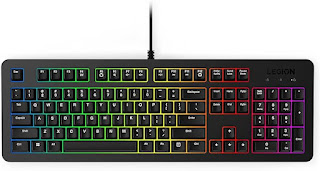How to use laptop efficiently
- Get link
- X
- Other Apps
today's digital age, laptops have become indispensable tools for work, education, entertainment, and communication. If you're new to using a laptop or looking to enhance your skills, this guide will walk you through the basics of using a laptop effectively.
1. Getting Started:
- Power On: Press the power button to turn on your laptop.
- Login: Enter your username and password to access your account.
- Desktop: The desktop is your main workspace. It displays icons, shortcuts, and a taskbar for easy access to applications and settings.
2. Navigating the Interface:
- Mouse: Use the touchpad or an external mouse to move the cursor and click on. Want to buy click here
- Keyboard: The keyboard is used for typing and executing commands. Familiarize yourself with common keyboard shortcuts for efficient navigation.
- Windows: Use the Start menu to access programs and settings. Use the taskbar to switch between open programs.
3. Managing Files and Folders:
- File Explorer: Use File Explorer to navigate through your files and folders. You can create, delete, copy, and move files here.
- Organizing: Keep your files organized by creating folders for different types of files. Use descriptive names to easily identify them.
4. Connecting to the Internet:
- Wi-Fi: Connect to a Wi-Fi network by clicking on the Wi-Fi icon in the taskbar and selecting a network to connect to.
- Ethernet: If you have an Ethernet cable, you can connect it to your laptop for a more stable internet connection.
5. Using Applications:
- Opening Applications: Click on the application icon on the desktop or in the Start menu to open it.
- Multitasking: Use the taskbar to switch between open applications. You can also use the Alt + Tab shortcut to quickly switch between applications.
6. Customizing Settings:
- Control Panel: Access the Control Panel to customize various settings such as display, sound, and power options.
- Settings: In Windows 10 and Windows 11, use the Settings app to customize your laptop's settings, including display, sound, and privacy settings.
7. Security and Maintenance:
- Antivirus: Install antivirus software to protect your laptop from malware and viruses.
- Updates: Regularly update your laptop's operating system and applications to ensure they are secure and up to date.
8. Shutting Down:
- Shutdown: To turn off your laptop, click on the Start menu, select Power, and then Shut down.
Conclusion:
Using a laptop efficiently involves familiarizing yourself with its basic functions and features. With practice, you'll become more comfortable using your laptop and discover new ways to enhance your productivity and enjoyment.
- Get link
- X
- Other Apps


.webp)
Comments
Post a Comment